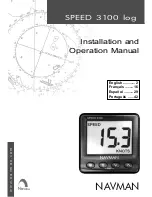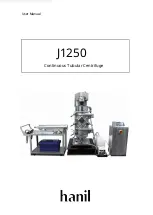
Warner Electric • 800-825-9050
P-273-5 -WE • 819-0529
9
Section I: Electrical Connections
To avoid injury (or even death),
always make certain all power is off before
attempting to install or service this device or any
electrical equipment.
The conduit connection hole in the motor clutch
module (10), brake (20, 20FBB or 20FBC), and
input clutch (30) are threaded for standard 1/2 inch
conduit connection . Electro-Module clutches and
brakes operate on DC voltage . Warner Electric
offers a complete line of electronic controls to meet
the needs of almost any clutch or clutch/brake
application . Each Warner Electric control will provide
the proper wiring connections for its use .
Control Requirements for (FB) Fail Safe
Brakes
Electrically Released Permanent Magnet Brakes
must use one of Warner Electric’s adjustable power
supplies . See the Service Installation sheet included
with the power supply for connection information .
Note:
All Electrically Released Permanent Magnet
Modules are polarity sensitive . Therefore, the (+)
red wire must be connected to the positive terminal
and the (-) black wire to the negative terminal .
Potentiometer control will then provide adjustment for
the proper brake release point .
Switching of clutch and (FB) brake with this type of
module should allow both clutch and brake to be
engaged and disengaged simultaneously for proper
operation .
If a Conduit Box is desired, Warner Electric Conduit
Box Kit, part number 5370-101-042, can be
purchased separately . The Conduit Box provides
two conduit connection holes for standard 1/2 inch
conduit connectors .
Note:
If you have a clutch/brake module, you may
need two (2) Conduit Box Kits because the clutch
wires and brake wires exit from separate holes .
Section J: FB Brake Release Adjustment
(20FBB, 20FBC)
Instructions for setting the optimum release voltage
of permanent magnet applied/electrically released
brakes .
The following procedure will result
in the brake releasing and allowing the load to
be free to move. Be sure the load is in a safe
condition before proceeding with this process.
In a permanent magnet applied/electrically released
brake, the attractive force between the brake
surfaces is created by permanent magnets . The
brake is electrically released by applying DC power to
the electro-magnetic coil in the brake that opposes
the permanent magnets .
Electrically released brakes are polarity sensitive:
the positive lead of the power supply must be
connected to the positive (red) lead of the brake
and the negative lead of the power supply must be
connected to the negative (black) lead of the brake .
The power supply applied to the brake must also be
adjustable so that the optimum release voltage for
each individual brake can be determined and set .
Table 3
Distance Load is Applied from
Electro-
Module
Housing Face
“A” Inches
Maximum
Load Rating
“R” Lbs.
EM-50
1” Center of Shaft
177
2” End of Shaft
123
3”
95
EM-100
1” Center of Shaft
192
2” End of Shaft
134
3”
104
EM-180
1” Center of Shaft
192
2” End of Shaft
134
3”
104
































